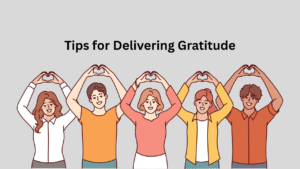In any professional environment, communication is more than just delivering information—it’s about connection, respect, and collaboration. One of the simplest yet most impactful gestures you can offer a colleague, employee, or client is a sincere “thank you for your input.” But how do you say it in a way that sounds both professional and genuine? In this guide, we’ll explore 11 powerful ways to say thank you for someone’s input that go beyond the basic phrase, leaving a lasting impression while nurturing stronger working relationships.
Why You Should Thank Someone for Their Input

Expressing appreciation for someone’s input does more than maintain workplace politeness—it creates an environment of mutual respect. When you acknowledge another person’s thoughts, you signal that their ideas are valued, which can:
- Encourage continued collaboration
- Enhance employee or peer morale
- Strengthen trust within a team
- Increase innovation through open dialogue
I remember when I led a cross-functional team at a marketing agency. We were struggling with a campaign concept for a major client. One of our newer team members offered a quiet, but insightful observation about the customer journey that completely reframed our approach. Simply taking a moment to say, “Thanks, that really helped clarify things,” boosted her confidence and ultimately brought the team closer together.
When to Use These Phrases
Knowing when to show gratitude is just as important as how. Use professional appreciation phrases in moments like:
- After receiving suggestions in a meeting
- In response to an email with thoughtful feedback
- During project debriefs or brainstorming sessions
- When peers or clients offer critical insights
These moments, when acknowledged properly, can serve as key turning points for improvement and connection.
You may love this one: 208 Good Luck Wishes for a Presentation
How to Say “Thank You for Your Input” Professionally
1. “I truly appreciate your insights on this.”
This phrase signals a deeper level of gratitude. Use it when a colleague provides expert advice or a unique perspective.
Use case: A coworker identifies a customer pain point you overlooked.
2. “Thank you for your valuable input; it really helped shape our direction.”
This line shows that their contribution had real impact. It acknowledges the effect, not just the gesture.
Use case: After a team brainstorming session that shifts your product strategy.
3. “Your feedback is incredibly helpful—thank you for taking the time.”
A great phrase for time-intensive or detailed feedback. It shows you respect their effort.
Use case: A client reviews a long draft proposal and sends thoughtful revisions.
4. “Thanks for sharing your thoughts—it’s given me a new perspective.”
Sometimes, an idea simply challenges your assumptions. This phrase shows your openness and humility.
Use case: A team member challenges a long-held policy with logic and reasoning.
5. “I always value your opinion. Thanks for weighing in.”
Use this to reinforce a long-standing relationship or when someone consistently contributes quality input.
Use case: A mentor or senior team member provides constructive criticism.
6. “Your suggestion has been noted and will be taken into serious consideration.”
Ideal for formal or high-level interactions. This phrase communicates professionalism and accountability.
Use case: A stakeholder or board member offers input during a review.
7. “I appreciate your candid input. It’s refreshing and needed.”
Critical feedback can be hard to digest, but acknowledging it openly shows maturity.
Use case: A colleague points out inefficiencies or blind spots.
8. “Thanks for pointing that out. It’s an important detail I missed.”
Acknowledging errors or oversights with grace builds trust and shows your commitment to quality.
Use case: A peer finds a factual error in your report before it’s sent out.
9. “Your comment was spot on and helped clarify things.”
This phrase affirms that their input made an immediate difference. It creates positive reinforcement.
Use case: During a fast-paced meeting, someone asks the right question that re-centers the discussion.
10. “We’ve incorporated your suggestion—thank you for contributing.”
This phrase is powerful because it shows follow-through. It says, “Your input mattered enough to act on.”
Use case: After revising a team process based on internal feedback.
11. “Your input made a big difference. I’m grateful for your involvement.”
Perfect for wrapping up a project or initiative. It ties appreciation to achievement.
Use case: End-of-project thank-you message to contributors.
Tips for Delivering Gratitude Professionally

Match the tone to the context.
- Formal settings (clients, executives) require polished language.
- Casual settings (internal teams) can be warm but still respectful.
Be timely.
- Delayed gratitude can seem insincere or forgetful.
Make it specific.
- Generic thanks won’t resonate. Mention exactly what they contributed.
Personalize it.
- Use their name, and consider their communication style.
Don’t overdo it.
- Repeated thanks can lose meaning. Be selective and authentic.
What to Avoid When Thanking Someone
Avoid vague compliments: Instead of saying “Good input,” specify what was good.
- Don’t fake it: Insincere thanks can be worse than no thanks at all.
- Steer clear of sarcasm or passive tone: Your words might be misinterpreted.
- Don’t ignore input you disagree with: You can still thank them respectfully.
- Example: “Thanks for bringing this up. It’s a different angle than we’ve considered, and we’ll review it further.”
Sample Scenarios and Responses
1. Team Member Feedback
“Hi Jenna, your analysis of the customer data uncovered a pattern we hadn’t seen. Thank you for your thorough review—it truly helped reshape our campaign focus.”
2. Client Suggestion
“Thank you for the feedback, Mr. Kumar. We appreciate your keen eye on the formatting issues, and we’ve already made the necessary adjustments.”
3. Peer Review
“Thanks, Alex. Your comments helped tighten the language and made the report stronger overall. I’m grateful for your input.”
4. Project Review
“Thank you all for your observations during the debrief. We’ve captured your suggestions and will be incorporating several changes moving forward.”
Real-Life Experience: One “Thank You” That Changed a Work Relationship
Early in my career, I worked under a team lead who had a habit of making quick decisions without involving others. One day, I carefully prepared a proposal for streamlining our workflow. To my surprise, after the meeting, she stopped by my desk and said, “Thank you for your input. It’s clear you put a lot of thought into this, and I want to explore your idea further.”
That single acknowledgment changed our dynamic. She began including me in more meetings, and we ended up co-leading a successful department-wide change. All because she recognized and vocalized her appreciation.
Final Thoughts
Gratitude in the workplace isn’t just a soft skill—it’s a powerful tool for connection, productivity, and leadership. Saying “thank you for your input” in meaningful ways can transform a conversation, strengthen trust, and create a culture where people feel seen and heard.
Start today: the next time someone offers an idea, challenge, or perspective, take a moment to thank them in one of these professional and heartfelt ways. You may be surprised at the doors it opens.
Deven Kumar is the passionate writer and founder behind povforbook.com, a website dedicated to exploring unique perspectives in literature and storytelling. With a deep love for books, language and traveling, Deven aims to inspire readers by sharing insightful reviews, thought-provoking synopses, Guiding tourist by sharing personal experience and engaging content that highlights the power of narrative. When not writing, Deven enjoys connecting with fellow book lovers and traveling lovers and continuously discovering new voices in the literary world.
